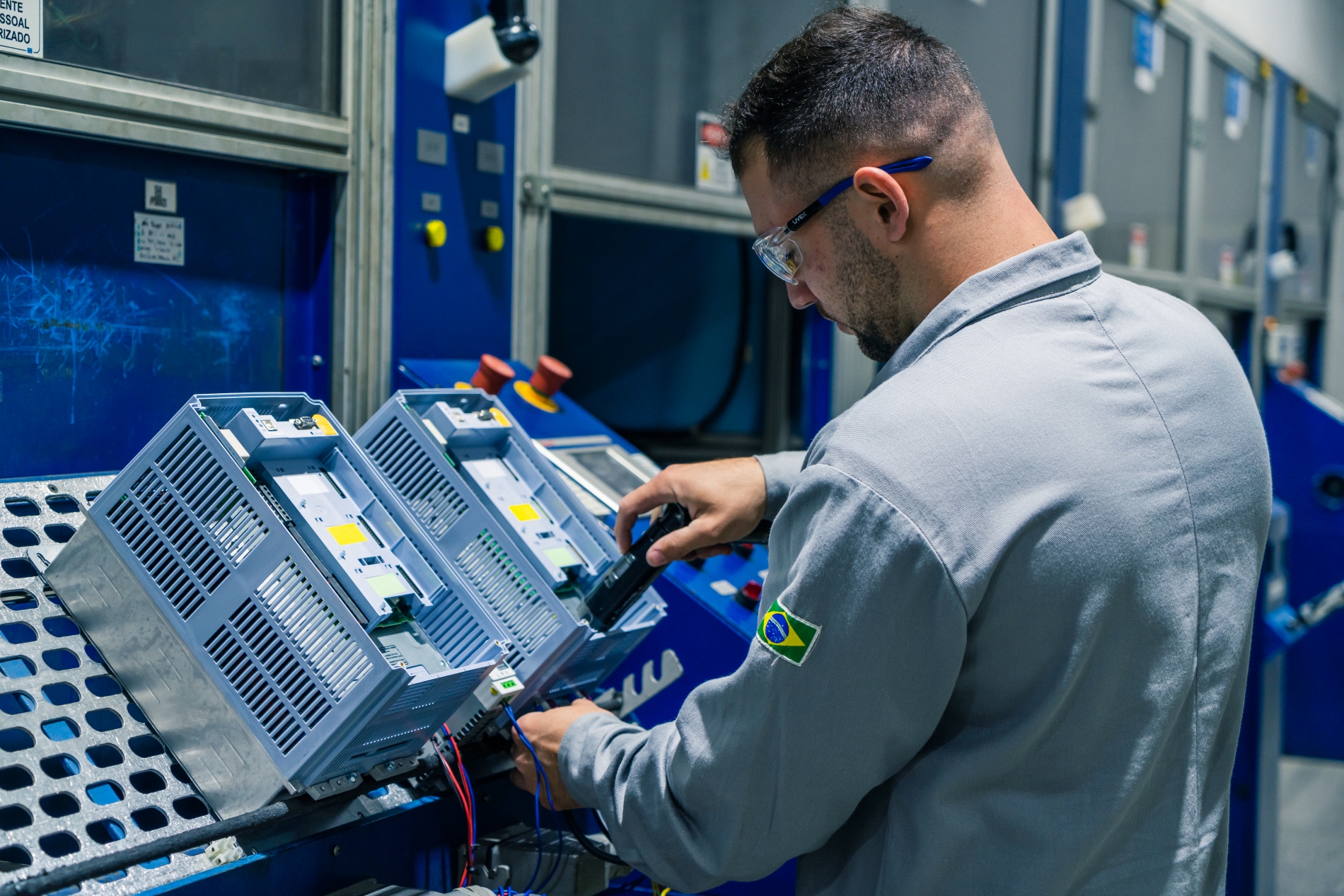In today’s industrial landscape, optimizing energy consumption and extending the lifespan of electric motors is a top priority. Variable Frequency Drives (VFDs) play a critical role in achieving these goals by controlling motor speed, reducing mechanical stress, and improving process automation.
From manufacturing and mining to oil & gas and food processing, industries are turning to VFDs to enhance efficiency, lower maintenance costs, and meet sustainability targets. In this article, we take a deep dive into how VFDs improve electric motor performance, especially when paired with WEG motors and automation systems.
A Variable Frequency Drive (VFD) is an electronic device that adjusts the frequency and voltage of power supplied to an electric motor. This allows the motor to operate at precisely the speed required for a given task, rather than running at full speed constantly.
A VFD regulates motor speed by converting incoming AC power into DC, processing it, and then using an inverter to generate a precise AC output with adjustable voltage and frequency. The process involves:
By dynamically adjusting speed (voltage and frequency), a VFD ensures motors operate at peak efficiency, reducing waste and improving performance.

Electric motors account for nearly 54% of industrial electricity use. Since motor speed and energy consumption follow a cubic relationship, a small reduction in speed leads to huge energy savings.
This is ideal for industries with variable load demands, such as:
One of the biggest challenges in motor-driven systems is mechanical wear caused by frequent starts and stops. When motors start at full speed, they experience high inrush currents and torque surges, leading to:
How do VFDs solve this?
VFDs integrate seamlessly with automation and control systems, providing:
Industries such as oil & gas, mining, and food processing rely on VFD-controlled WEG motors to ensure smooth, efficient, and reliable operation.

VFDs are essential in industries requiring continuous motor operation and process automation:

WEG motors are engineered for high efficiency, durability, and seamless VFD integration. When used together, they offer:
VJ Pamensky (WEG Canada) provides cutting-edge motor solutions designed to work efficiently with VFDs, ensuring maximum reliability and cost savings for industrial applications.
Integrating VFDs with electric motors is an effective strategy for reducing energy costs, improving process efficiency, and extending motor lifespan. Whether you're in manufacturing, oil & gas, mining, or food processing, VFD technology enhances productivity while cutting waste.
Interested in optimizing your motor-driven systems? Contact VJ Pamensky today for expert recommendations!